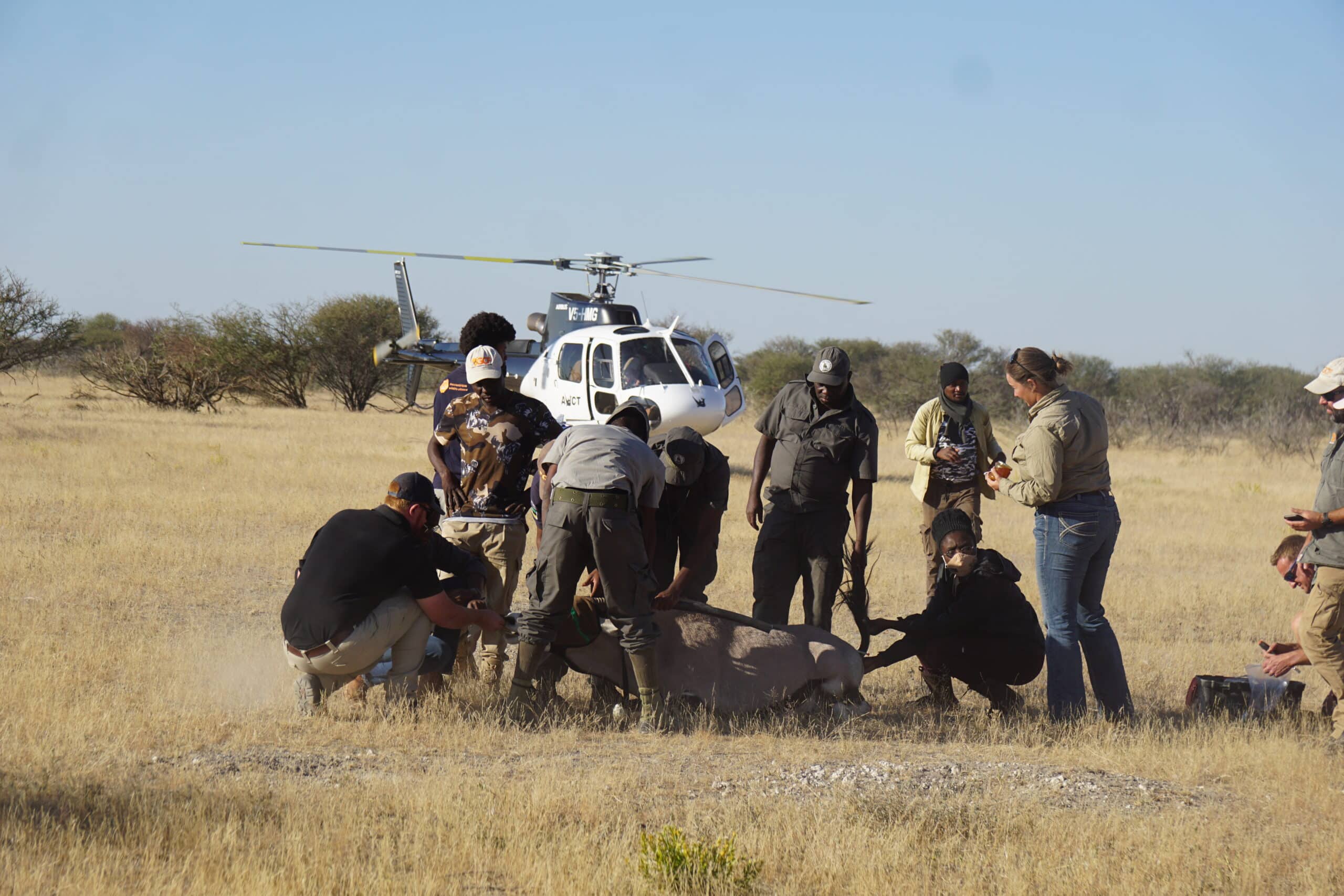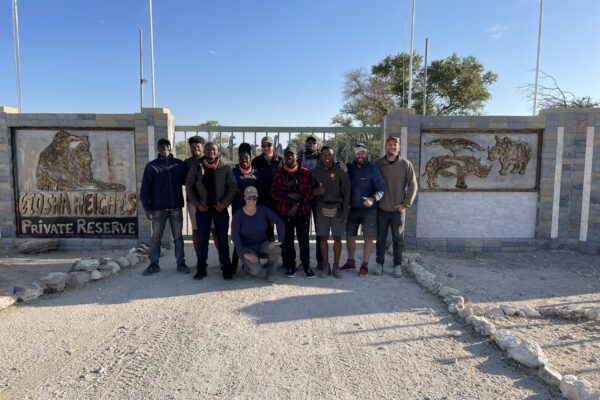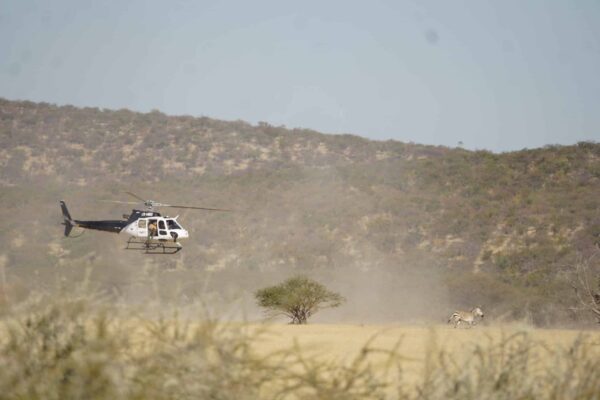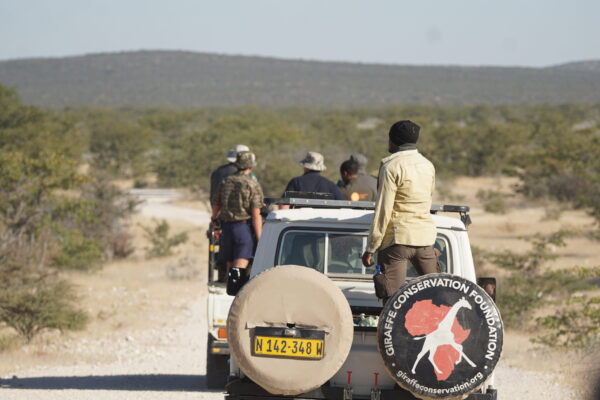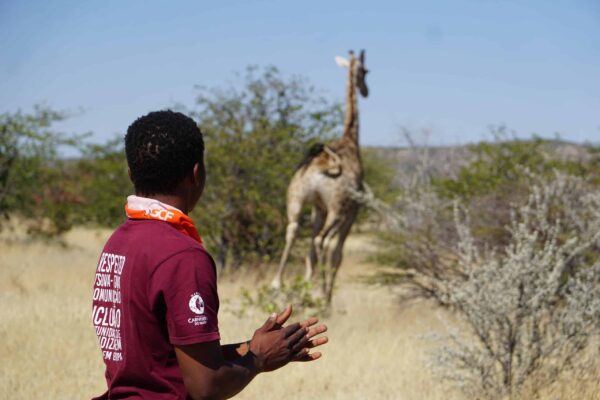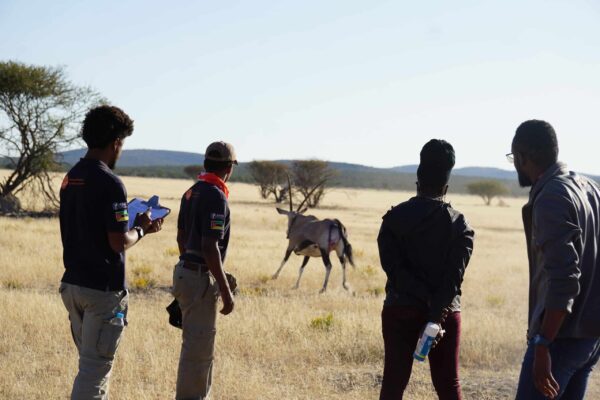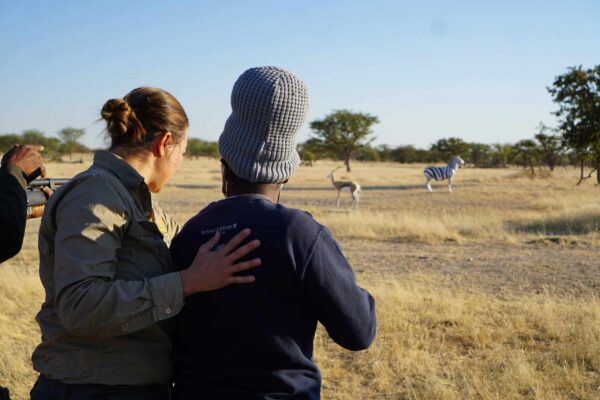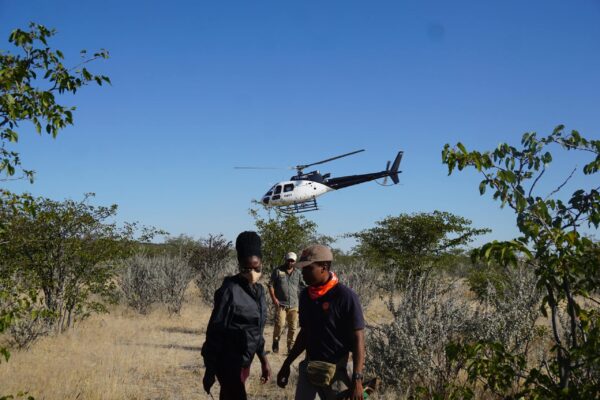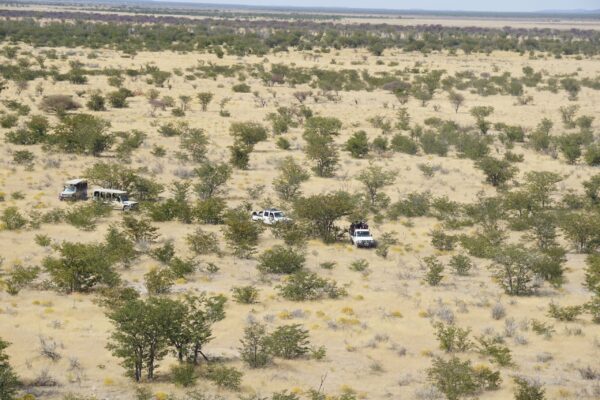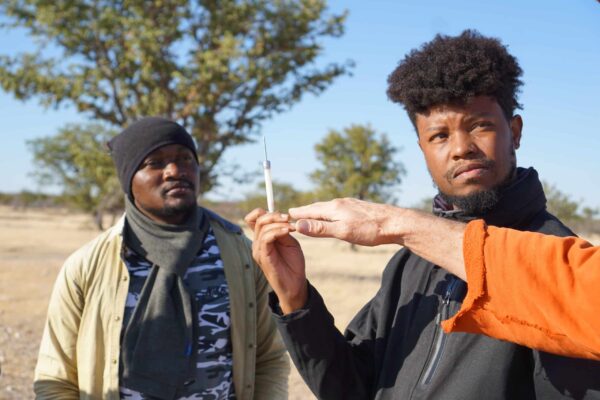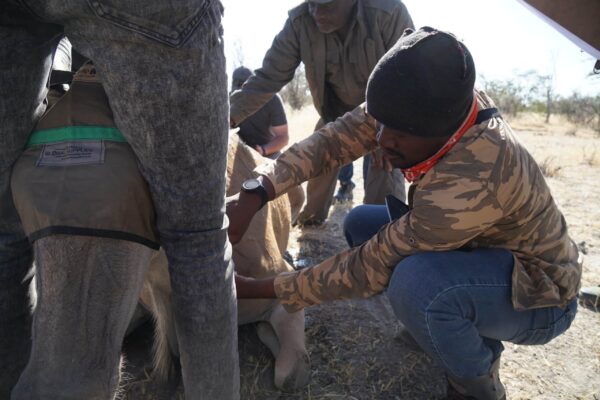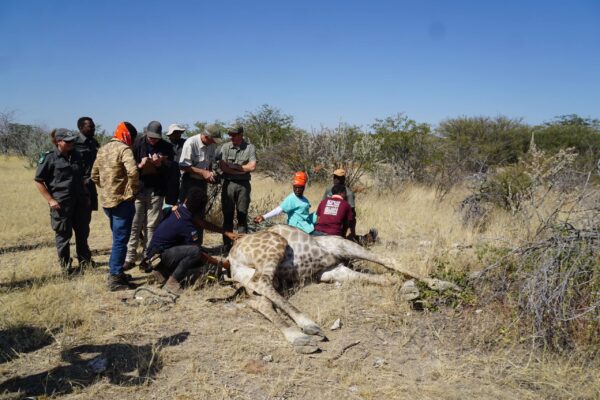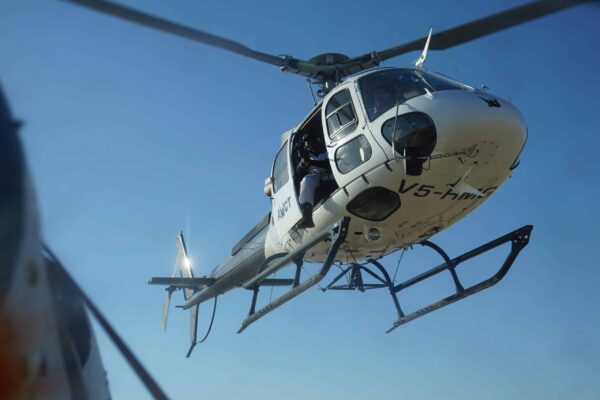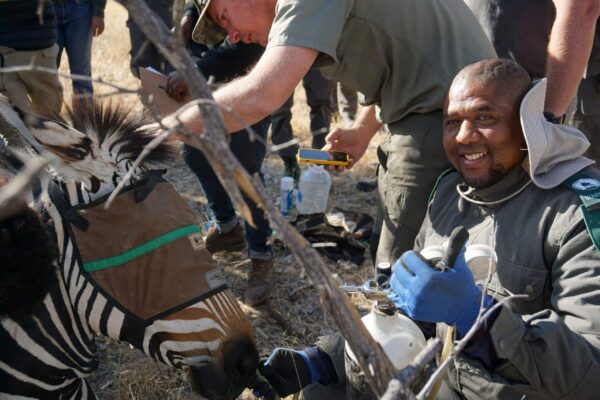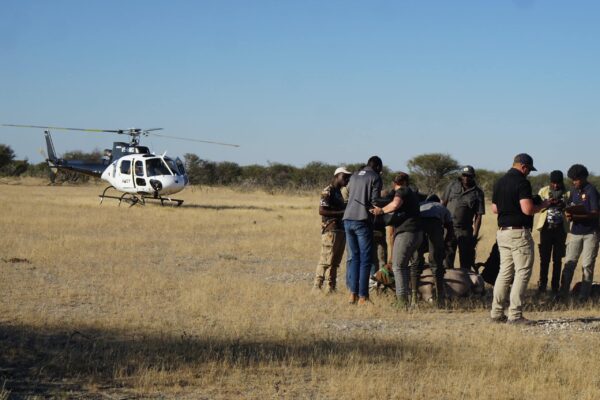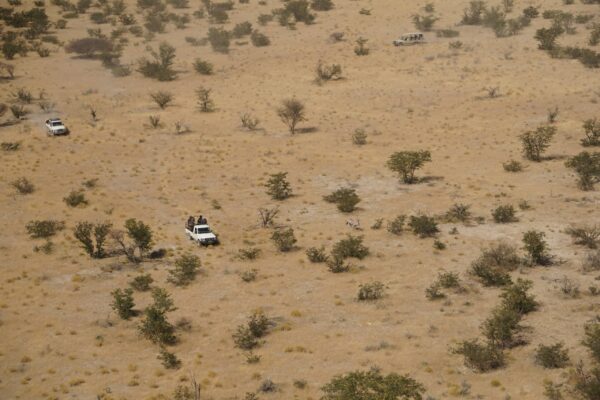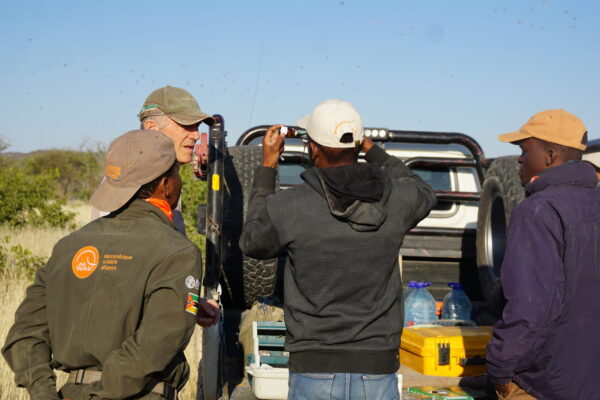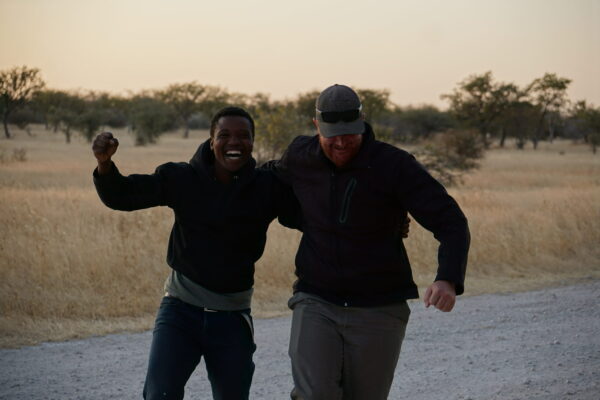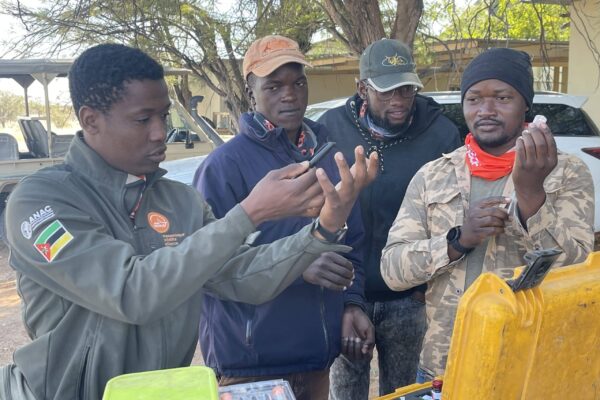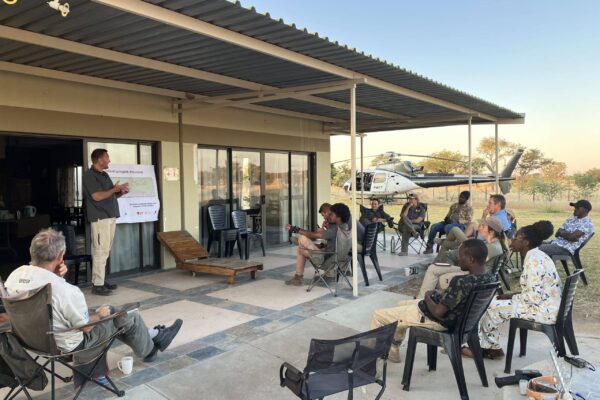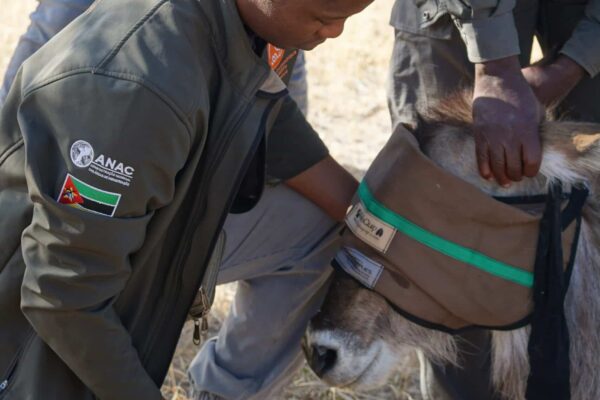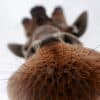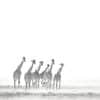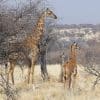Africa’s Wildlife Conservation Leaders: Enhancing Capacity – One Veterinarian at a Time!
Have you ever darted a giraffe from a helicopter or moved a sable antelope? Have you fitted a GPS satellite tracking device to an elephant or an oryx? And have you done all of this in a single day?
Eight young African wildlife veterinarians who recently participated in a 10-day hands-on training course organised by the Giraffe Conservation Foundation (GCF) in collaboration with the University of Namibia (UNAM), Namibia University of Science & Technology (NUST), African Wildlife Conservation Trust (AWCT) and the Namibian Ministry of Environment, Forestry & Tourism (MEFT), will answer with a resounding YES to all these questions. During a highly interactive field time at the Etosha Heights Private Reserve, these young veterinarians have been directly involved in building their own capacity through an array of wildlife capture, collaring, tagging, moving of animals and much more, while at the same time supporting the conservation management of one of Namibia’s largest private reserves.
As the leader in giraffe conservation, GCF currently implements and/or supports giraffe conservation initiatives in 17 African countries, often working closely with wildlife veterinarians. While most African countries don’t necessarily have a shortage of veterinarians, few have specialised skills or experience in wildlife veterinary medicine. Based on our collaborative conservation programmes throughout Africa, GCF and other organisations have historically brought in wildlife veterinary expertise from Southern Africa to assist and help build local capacity when implementing critical conservation projects.
However, GCF was determined to make a long-term impact by providing young African vets the opportunity to gain hands-on experience in wildlife immobilisation through a ten-day intensive theoretical and practical field course hosted in Namibia by some of the industry’s leading experts. Eight young aspiring wildlife vets from the Democratic Republic of Congo, Mozambique, Namibia, Tanzania, and Uganda, four members of the MEFT game capture team, four wildlife ecologists and seven highly experienced wildlife vets as mentors worked collaboratively to share skills and experiences, and at the same time provide invaluable conservation support at Etosha Heights Private Reserve in Namibia, one of the country’s largest private reserves. This fantastic opportunity was made possible by GCF who fully funded the participation of the eight African wildlife vets and invited them to Namibia for the training.
“We currently support giraffe conservation in 17 African countries and veterinary interventions are often a key part of our work. Giraffe can be particularly difficult to immobilise due to their unique physiology. To ensure their safety, we often bring our own vet or experts along if there is not sufficient experience in the country. The problem is not a lack of local vets, but often there is limited expertise in wildlife or simply a lack of confidence – confidence that can only be developed through experience. It was with this in mind that we developed this hands-on practical course here in Namibia to build these future African conservation leaders who collectively work in more than 1.3 billion hectares of land.” says Dr Julian Fennessy Conservation Director of GCF.
“Wildlife in Africa can ultimately only be conserved by African people – they simply need the relevant skills and opportunities to do this effectively. Upskilling young Africans provides an important step towards this goal and is particularly important for wildlife veterinarians, who play a critical role in conservation.” adds Dr Sara Ferguson, lead veterinarian during the course and GCF’s Conservation Health Coordinator.
During the hands-on training, the young African vets took the lead during the immobilisiations of most individual animals under the guidance of one of the expert vet mentors. Prior to each immobilisation, drug protocols and appropriate darting equipment were discussed, and each operation (ground- or helicopter-based) carefully planned before putting the plan into action. Open debriefing discussions after each immobilisation offered ample opportunity for peer-to-peer skills exchange, analysis of what worked well and what did not, including the effects of different drug regimens used for comparison. During these discussions the participants often became the teachers based on their own experiences and as such creating a very conducive training environment.
“The old adage ‘I hear and I forget. I see and I remember. I do and I understand.’ is particularly relevant in the wildlife veterinary arena, for it is only through the actual acts of planning and executing the immobilisation of a wild animal that the veterinarian fully hones his or her skills in the face of challenging situations. To this end registering all participants with the Namibian Veterinary Council to be able to carry out wild animal immobilisations under supervision was an invaluable advantage to this course.” says Dr Mark Jago, Senior Lecturer at UNAM’s School of Veterinary Medicine and continues: “It was a privilege to be part of something where young veterinarians from around the African continent demonstrate knowledge, passion and skill in abundance, and there are few things as rewarding as being part of an opportunity for passionate professionals to take their skill set to the next level. The experience is particularly exciting when an NGO such as GCF teams up with a university such as the University of Namibia’s School of Veterinary Medicine and a number of other highly experienced partners in the wildlife field.”
Capturing and moving sable antelope and waterbuck between camps on Etosha Heights Private Reserve, and fitting eland, African savannah elephant, gemsbok, Angolan giraffe, and Hartmann’s Mountain zebra with tracking devices for remote monitoring and much more were part of the field course. During this course, Ceres or Ceres Wild GPS satellite ear tags were deployed – in most cases for the first-time ever for the species in the wild. Handling and target practice with different dart projector models – both from the ground, in a vehicle, and from a helicopter – were another valuable aspect of the course, as were the many targeted and general discussions on topics such as the ethics of wildlife tagging, policies and legislation, conservation science and management, and importantly, partnership development.
Each of the young African wildlife veterinarians brought along a host of real-life experiences from their respective workplace and country, allowing everyone to also build an important network of peers for future information exchange, and an impressive resource of knowledge to tap into when back home.
“It is incredible how much you can learn in one week! We have worked with wildlife before, but this was an amazing opportunity to gain experience with animals we have not yet encountered in our professional practice. Working together with so many experts in their fields has been invaluable. Every participant and mentor brought something different to the course and having these open discussions has simply been fantastic.” commented Drs Hugo Paixao Perira and Hagnesio Chiponde from the Mozambique Wildlife Alliance.
The field course was preceded by a three-day continuing professional development (CPD) lecture-based course in Windhoek that was also attended by an additional 30 Namibian veterinarians and para-veterinarians and co-hosted by the UNAM School of Veterinary Medicine and GCF. This course was tailored to wildlife practitioners looking to keep up to date with current techniques and best practices for successful wildlife operation, as well as veterinarians wishing to gain a better understanding of wildlife medicine in Namibia. Lectures were presented by staff of UNAM’s School of Veterinary Medicine and a number of experienced private veterinarians working with wildlife in Namibia.
All immobilisations in the field were undertaken as part of planned reserve management activities and landscape level long-term conservation science programmes that explores the effect of different wildlife land use types (National Park, Private Reserve, commercial game farms and communal conservancies) on biodiversity and ecological productivity in an area covering almost 2 million hectares in the Greater Etosha South-West Landscape (GESWL). Spearheaded by the NUST Biodiversity Research Centre (BRC) and GCF, this study is conducted in collaboration with many local and international partners and stakeholders.
The participation of the eight African vets was fully funded by the Giraffe Conservation Foundation. The field course was generously supported by the African Wildlife Conservation Trust (AWCT), who kindly availed their helicopter for the training. AWCT, African Wildlife Services, MEFT, UNAM’s School of Veterinary Medicine and Wildscapes Veterinary provided valuable veterinary technical skills and mentorship. Financial support was provided by GCF and their donors including the Ivan Carter Wildlife Conservation Alliance and Oklahoma City Zoo. A special thanks goes to Etosha Heights Private Reserve, Natural Selection and the Namibia University of Science and Technology (NUST) for their support of this field course.
If you want to be part of the solution and help us continue making a difference for giraffe and all wildlife in Africa through capacity building, training and conservation actions, get in touch or Donate NOW.

